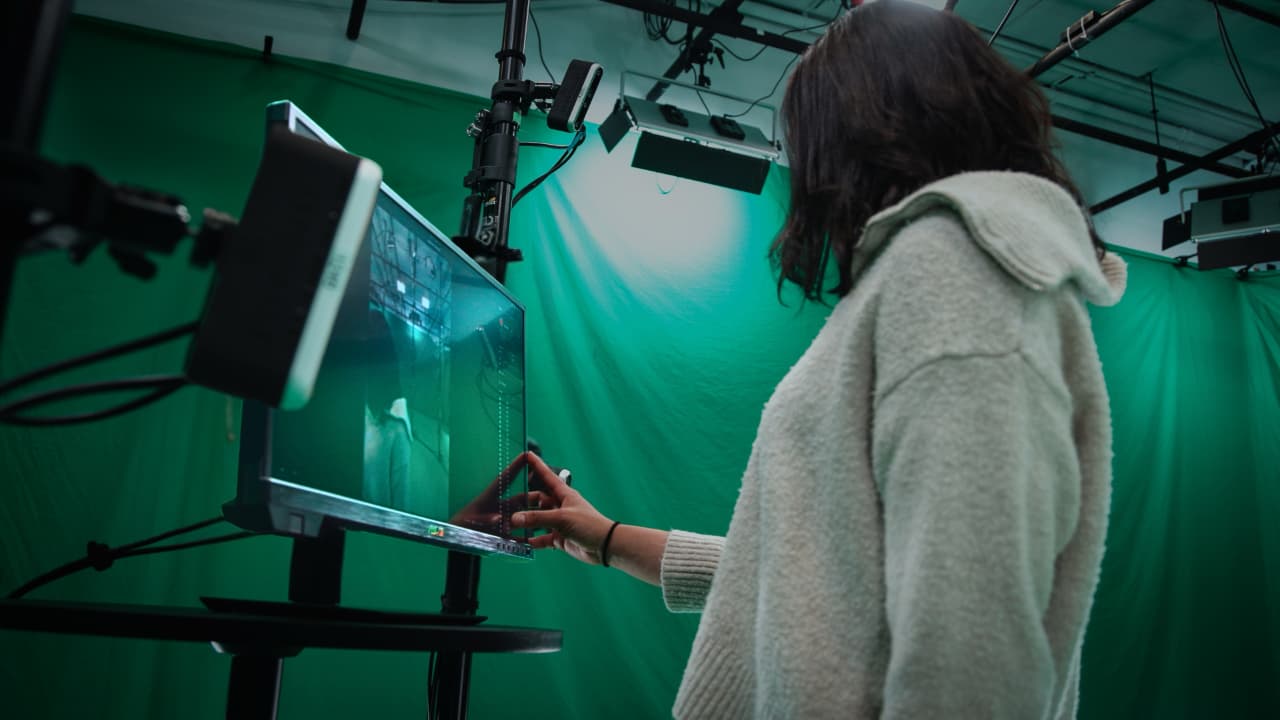
3D content capture makes it possible to bring together the performances of live performers and endless possibilities of digital spaces. Here’s how Brooklyn’s Evercoast does it.
This is a project we worked on with ASUS in recent months, but has enough cool elements to it that we thought it well worth sharing here.
Evercoast, headquartered in Greenpoint, Brooklyn, has developed advanced volumetric capture technology to serve a range of industries—from real-time sports broadcasting to academic research. At the core of its offering is its Mavericks software, which combines multiple camera feeds surrounding an object or a performer to generate high-quality 3D assets in real time.
One of Evercoast's key challenges in setting up all this has been achieving minimal lag in real-time volumetric video, especially in high-impact scenarios like live sports interviews or interactive educational experiences. Processing large 3D datasets efficiently without sacrificing visual quality also required advanced hardware and software solutions.
“We’re trying to take the kind of volumetric capture you see in Hollywood and make it portable and affordable,” says Ben Nunez, co-founder and CEO of Evercoast. “But to do that, we need the most advanced technology available.”
Performance kit for performance capture
As part of that process, Evercoast tapped ASUS products and a combination of NUC mini PCs and ProArt monitors.
At the heart of Evercoast’s system is the ASUS NUC 14 Performance, featuring an Intel Core Ultra 9 processor and an NVIDIA GeForce RTX 4070 discrete GPU. This setup allows Evercoast to deliver a live-streamed 3D asset with only 300 to 500 milliseconds of lag, ensuring seamless real-time interactions for broadcasts or virtual interviews.

One key advantage of the NUC 14 Performance is that it offers an integrated NPU for machine learning and AI processing. This AI integration is critical for Evercoast as it move towards generative AI workflows, enhancing their ability to create immersive 3D experiences.
Meanwhile, Evercoast’s on-set production leans on the ProArt Display PA24US, a 24-inch 4K HDR monitor with professional-grade color accuracy, wide color gamut support, and 12G SDI connectivity. SDI cables are preferable for production sets, as they allow for longer cables than HDMI alternatives and their connectors lock into place to make sure that a jostled cable doesn’t halt production.

The PA24US includes a built-in motorized colorimeter to streamline the process of maintaining accurate colors, and with ProArt Preset it allows users to set it up in any color space in seconds. High-quality ergonomic features make it easy to set up, mount, use, and pack away quickly — crucial for mobile production companies that need to stay light on their feet.
For post work, the Evercoast team prefers larger monitors with high-end HDR capabilities. The 32-inch ProArt Display PA32UCXR is the perfect fit for their needs, featuring as it does a 4K UHD resolution, true 10-bit color depth, and 1600-nits peak brightness. A Mini LED backlight with 2304 local dimming zones allows it to achieve 1000 nits of sustained brightness without partial patch limitations.

“It’s essential that what we see on-screen matches the final product,” says Nunez. “Accurate color reproduction allows us to create assets indistinguishable from reality.”
Volumetric capture in the real world
So, where is this technology currently being used?
- Academic Research: Institutions like NYU Tandon utilise Evercoast’s volumetric capture systems to study human motion in new ways. With Evercoast’s 3D capture technology, students and researchers gain insights into biomechanics, physical therapy, and dance, benefiting fields far beyond traditional media. "At NYU, we use Evercoast to study how people move in space," explains Todd Bryant, course director at NYU. "It’s especially useful for understanding the subtleties of posture and movement."
- Sports Broadcasting: Evercoast’s technology is transforming live sports broadcasting, enabling broadcasters at major events like the 2024 Paris Olympics to conduct live 3D interviews with athletes. This innovation offers immersive experiences and enhances viewer engagement, allowing broadcasters to transcend geographical limitations while delivering high-quality content.
There will be more to come too. “The technology from ASUS and our other partners has been a game-changer for us,” Nunez reflects. “We can now live-stream 3D content to anywhere in the world with almost no delay, and that’s been critical to our success.”
As Evercoast accelerates into exploring generative AI and advanced volumetric capture, it is committed to making 3D content creation more portable, accessible, and affordable. Check out the video below:


Comments